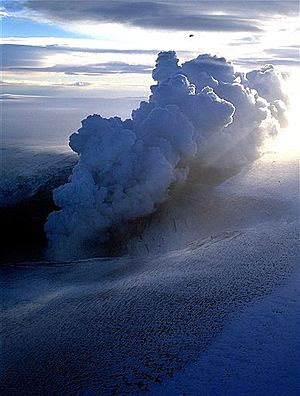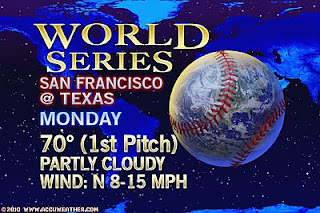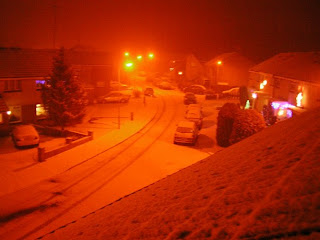>See Weather & Climate Through the Eyes of Mark Vogan on Facebook and Twitter. What are you missing? Videos, Weather Info and promotional items which are NOT seen here on the blog! During your visit, click “like” and be a part of the blog.. thanks for reading and your support.
Today’s Top Weather Stories
On Weather & Climate Through the Eyes of Mark Vogan
Courtesy of AccuWeather FILE – In this Thursday Nov. 4, 2004 file photo a cloud of ash erupts from Grimsvotn, a lake in the middle of Vatnajokull, the biggest glacier in Iceland.
Another Icelandic Volcano Eruption Likely in Near Future
AccuWeather News
Indonesia Volcano Erupts Again
AccuWeather News
Today’s Weather across America
From AccuWeather
Rain, Thunderstorms to Challenge Southern Voters
By Alex Sosnowski, Expert Senior Meteorologist
Coldest Weather So Far This Season
AccuWeather
World Series Weather Forecast
By Gina Cherundolo, AccuWeather.com Staff Writer
Weather Talk
By Mark Vogan
Mark Vogan’s Official 2010-2011 Winter Forecast for Great Britain and Europe
Britain to face a 3rd straight winter with significant periods of cold and snow, however worst of winter will hang over central and eastern Europe, making this year different to last.
KEY HIGHLIGHTS
Like experienced during the winter 2008-09 there will be a series of cold waves brought in from the Arctic presenting much of the UK with snow and low temperatures. With perhaps several cold waves this year, these blasts of Arctic air will likely last 5-10 days on average throughout the winter season (December through March) with milder Atlantic air filtering back in between each cold period.
The November 20th through December 31st period may turn out to be the worst part of winter, with a set up eerily similar to the closing days of December 1995 which brought a low of -20C to Glasgow and a tie of the UK record of -27C at Altnaharra, Sutherland!
Coldest air of winter to settle over Western Europe, including UK during first half of season, then migrate eastwards as the season progresses allowing mild Atlantic air to rule for the mid-point of winter.
Much of December may be much below normal from Inverness all the way to the south coast of England with daytime highs struggling to get above freezing. Nights, if there’s plenty of snowcover, may see temperatures plunge below -10C across much of Britain away from the coast with some of the coldest spots in England (Shap, Cumbria, Woodford, Manchester, Benson, Oxfordshire) pushing into the -15 to -18C range and some Scottish Highland locales such as Dalwhinnie, Tulloch Bridge, Tyndrum, Aviemore, Altnaharra and Braemar may take a run at the values experienced last winter (-18 to -22C).
All of the major Scottish cities of Glasgow, Edinburgh, Perth, Dundee and Inverness may see highs only warm to -3 or -4C with night time lows plummeting under the perfect conditions of an already very cold air mass, clear skies, light winds, an Arctic high pressure cell overhead along with widespread snowcover which will allow maximum radiational cooling and may drive night time lows into the -11 to -15C range in these cities. Major towns such as Stirling, Livingston, East Kilbride, Airdrie to name just a few, may see days struggle to also reach -3 or -4C. With the same conditions in less urban-warmed environments of towns and plenty of snow covering the ground to help trap heat being released by the soils below, nights may plunge to near record values, dipping towards -15C. Yes even in town and city centres.
The major cities of northern and central England and Wales may also be in for a cruel blast from the Arctic, though snow should cover many places, temperatures in towns and cities that are away from the moderating influences of both the North Sea and Irish Sea and have snow on the ground may take a run at -8 to -10C. Liverpool may shiver to -7C whilst further inland Manchester, just west of the Pennines may see lows push -10 to -12C whilst Woodford which hit a frigid -18C last year may push -15C, given last year’s value was extreme!
I expect Birmingham to drop towards -8 to -10C and similar values for Oxford. London may be in for colder than anything experienced even during the cold of winter 2008-09. Whilst the lowest values at Heathrow were -6C, a -7C or perhaps even a -8C is possible this year!
After a fairly tough December overall and a high probability for a White Christmas across much of interior Scotland including the Central Belt of Scotland (Glasgow to Edinburgh and points north and south that are away from the coast) as well as many areas of interior northern and central England including the Midlands, but snow may stretch as far south as Oxford and outlying areas of Greater London and interior Wales, (Northern Ireland may not see much snow) a major mild period is likely to hit as all the cold Arctic air commences it’s migration eastwards towards the heart of central and eastern Europe from Germany and Poland southward to Switzerland, Italy and across to the eastern European countries of the Ukraine, Romania and Turkey, this will be their turn to experience a brutal mid and later part of winter 2010-11. I expect this transition from very cold and snowy to very mild and perhaps wet and stormy for the UK and western Europe close to or slightly after New Year and may stretch through much of January. The heart of winter from January 1st through February 1st may see a harsh and severe winter period set in with Moscow perhaps enduring one of it’s worst deep freezes in living memory, many central and eastern European countries are likely to see some of the coldest temperatures in 50 to 100 years along with many deaths.
After the milder period, on and off, less intense cold and snow will impact through February and March.
A LITTLE INSIGHT INTO MARK’S THOUGHTS
SPRING AND SUMMER PATTERN TELLING A STORY
After periods of record-breaking cold which have shivered the UK, outwith the more typical cold season with last May displaying the coldest values since 1996, August being the coldest in 17 years with a frosty close to what’s typically a summer-month and both September and October showing yet more unusual cold for the time of year. Though I don’t see this as a sign of a truly brutal winter ahead, I do see this telling me other things about the winter ahead for us Brits and indeed across the continent.
UPCOMING WINTER MAY HAVE MORE IN COMMON WITH WINTER 2008-09 THAN LAST YEAR
Winter 2008-2009 was a cold winter when comparing the previous ones with repeated cold and snowy periods. Remember the snow that crippled London in February, all in all it was colder and snowier than anything seen since 2000-2001 and MUCH colder than those warm, wet and wind-ridden ones leading up to 08-09. But despite 2008-09 displaying some of the coldest temperatures in many years and plenty of snowy periods, there was milder weather in between, including a mild period which shattered our chances of a White Christmas after the coldest start to a December in some 30 years.
Last winter of course was near impossible to not have that White Christmas with picture-perfect scenes and too much cold, across pretty much all of western and central Europe….
So, why not the same kind of winter to last? That question is simple, there are different drivers or players on the field, that will alter the tactics as to how and where Old Man Winter will fire the shots.
Instead of an El Nino last year, we have a La Nina, this tends to set up the upper-atmospheric pattern differently to an El Nino, thus explaining first and foremost why I think this year will be different. La Ninas don’t tend to favour as much cold to “western” Europe as much as El Nino, however, always remember that no El Nino or La Nina is created equal or the same, therefore that is just the start of the complications to this year’s forecast.
A BLOCKING PATTERN OVER THE NORTHERN HEMISPHERE CREATES THE EXTREMES WITHIN THE FORECAST
Over the past 6-12 months now, perhaps due to increased high-latitude volcanic activity or not, the pattern across the Northern World has very much been dominated by a “blocking pattern”, large ridges and troughs that sit in one place for weeks, if not months, that’s what we’ve seen this summer with the warm, dry settled pattern to start. But then as summer matured that ridge migrated eastwards, and our atmosphere was replaced by a trough, bringing the mid and later part of our summer unsettled and generally cool weather, yet 1,000 miles to the east, it was the hottest summer on record in Russia and surrounding countries.
Last winter the “stuck pattern” brought a dominated Arctic “Continental” pattern of very low temperatures and periods of snow, combining the snow cover, persistency in the cold air to keep the snow from melting as well as what I would call the “classic El Nino” winter trough over western Europe as well as the shear depth of Arctic air which was contained within that huge trough, that is what brought us very cold temperatures, persistently from late December through late March and all the way into May.
ULTIMATELY WINTER 2010-2011 TO SEE LESS PERSISTENCY IN THE COLD COMPARED TO LAST YEAR BUT WHEN THE COLD AND SNOW DOES HIT, IT MAY BE WORSE THAN LAST YEAR IN AREAS!!
I have fought and fought with my ideas right up till now (Oct 29th) about just how cold and snowy the periods will be this year.
Although the La Nina pattern as it sets in this year, particularly into the later half of the winter would suggest the Arctic trough to be bias towards eastern Europe, there is part of me, that’s not wanting to suggest that we’re in for a warm mid to later part of winter.
Other factors……
LOW SOLAR CYCLE PLAYING A ROLE IN A COLD FORECAST
Whilst there will be a substantial mild period in between cold for the UK, this forecast, like last years is colder than what many have out. So why am I forecasting for extreme cold again?
My reasoning for the cold to be as severe as I believe it will be is because of the continued “very low solar cycle” and this also played a major deciding factor into last year’s forecast. There has been little pick-up of activity on the face of the sun. The more sun spots there are, the more active it becomes. Though there has been more spots appearing over recent months when compared to this time last year, it remains very quiet and this worries me about the effect this may directly have on our winter again here. By looking at history, the activity on the sun and it’s relationship to temperatures here on earth relate hand in hand and this coupled with an increase in high-latitude or Arctic volcanic activity and their impact on cooling as well as more importantly “high latitude blocking” means that though the pattern of the upper-levels is different and would likely suggest milder rather than colder, there are outside factors that I believe can’t be ignored.
Feel free to add your comments or email me regarding this forecast.
What’s Reaching Today’s Blogs?
Haiti, Hazel, Hurricanes, Record Season and Tomas
Jesse Ferrell, AccuWeather
The Next East Coast Storm: Develop and Up, or Up and Out?
Joe Lundburg, AccuWeather
Drier Northwest/Hot Spell Southwest California
Ken Clark, Western Expert, AccuWeather
The Extremes of the Day
Today’s US Extremes
Courtesy of AccuWeather
High: 96 degrees at McAllen, TX
Low: 15 degrees at Embarrass, MN
Today’s UK Extremes
Courtesy of the Met Office
High: 60 degrees at Mumbles Head (S. Wales)
Low: 22 degrees at Altnaharra (Sutherland)
Today’s Extremes here at my house
High: 49 degrees
Low: 34 degrees
TODAY’S COND
After an overnight which started off wet and drizzly, skies cleared throughout the night allowing the temperature to drop off quickly. By morning frost and frozen rain drops made for tough scrapping of windscreens. After a beautiful, sunny and bright morning, a new weather system pushing into the west coast eventually brought a heavy band of rain into the Greater Glasgow area by early afternoon and spread across the country as the day wore on. Rain, which was heavy at times continued throughout the rest of the day and into night along with strenghening southerly winds.
Thanks for reading.
-Mark



















Recent Comments